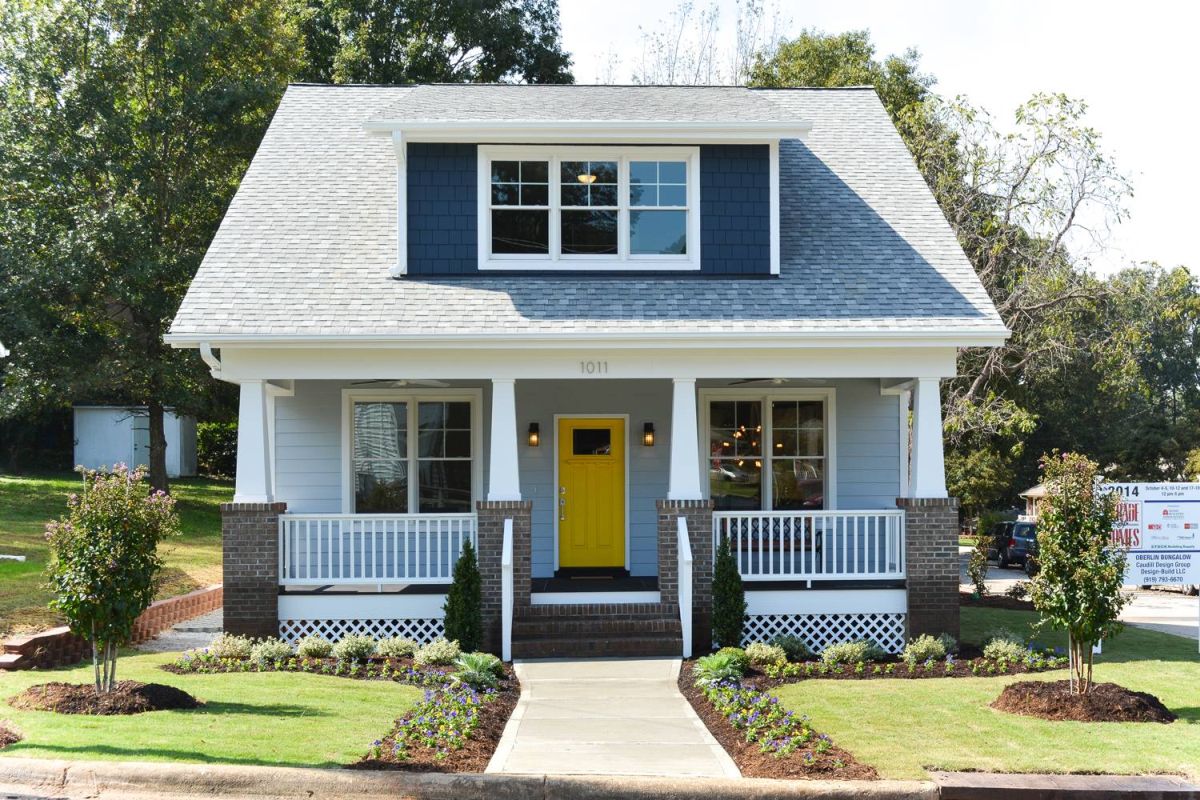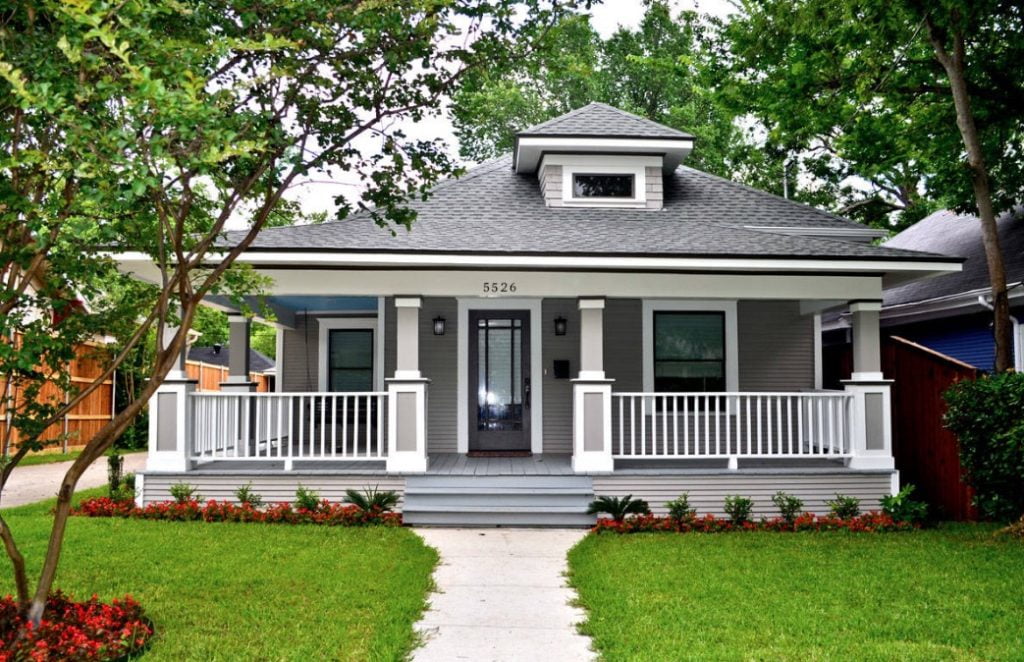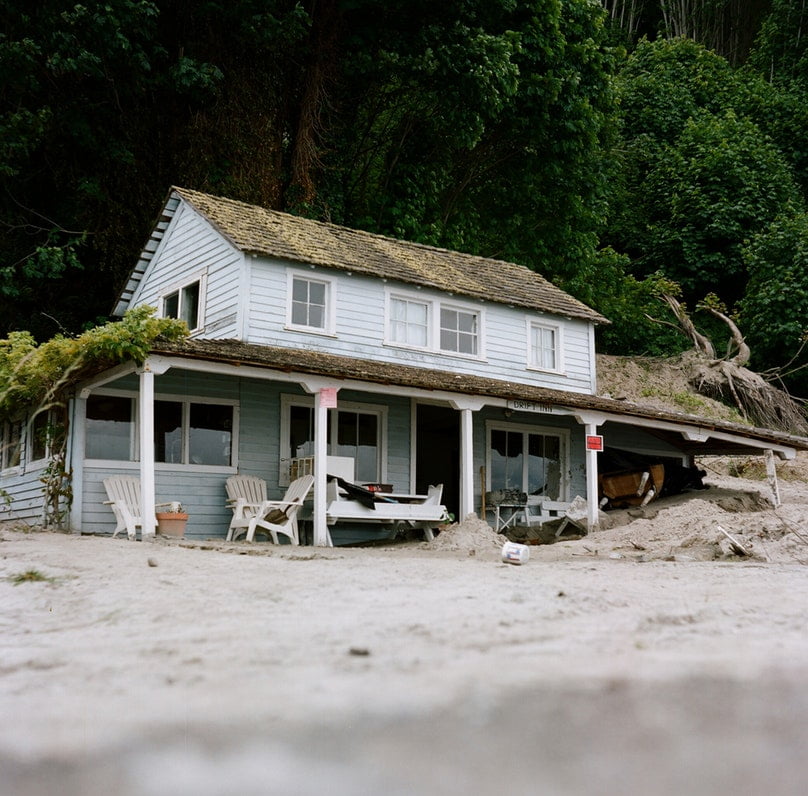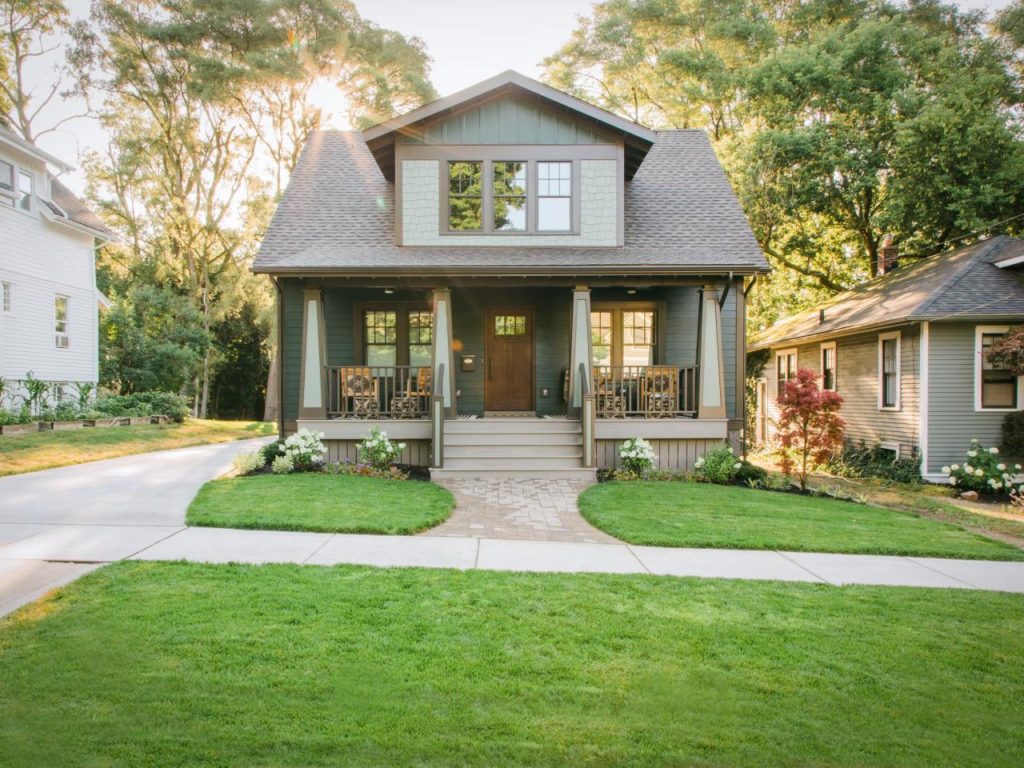The Craftsman House, also known as the American Craftsman, is an architectural style that originated from the American Arts and Crafts Movement towards the end of the 19th century.

This has been an integral part of the very beginnings of practical skills that include interior designing, landscape designing, and decorative and applied arts in the American domestic architectural scene at that time.
These Craftsman homes gained some serious popularity almost as soon as they started appearing, owing to their clean layouts and a spectacular blend of antique England houses of the Victorian era and modern designs. This brought in the beauty of the ornate Victorian forms with a spring-like freshness of modern designs.
Craftsman House Style & Why It's Popular
What happened was because of this style, more and more people came forward to invest and put mass production in creating these beautiful structures. Not only these had a very contemporary look and feel about them but they were also exceedingly durable and profound in character.
So, as the world took its very first steps in moving away from the Victorian influence, the American Craftsman homes provided them with a much cleaner, modern look that was a welcome spell and substitute for the expected Victorian frills.

Image via Creative Architects
History of the Craftsman Home
The most interesting thing about the origins of the Craftsman homes is that the style was born out of the late 19th-century British social movement. During this time, Britain was going through all of the direct impacts of the Industrial Revolution more severely than any part had to sustain at that point of time in history.
The contrarian Arts and Crafts Movement at this time marked one of the most critical moments in the history of architecture. The movement was focused on rejecting any trace of the new and mass-produced construction style in favor of handcrafted products made by artisans.
The movement eventually pervaded America, at the turn of the century, under the deft leadership of Gustav Stickley, the founder, and editor of The Craftsman magazine. His publication sold blueprints for homes that were designed in the Arts and Crafts style. His motive was to make “serious architecture” accessible to the broader mass.
The term “Craftsman” was originally reserved for homes that were built using one of Stickley’s plans. However, it has evolved and grown to define a certain architectural style today.
As of today, Craftsman homes are identified by certain common characteristics. Yet, each of these features includes a solely individual detail unlike any other that makes all layouts absolutely unique and exceedingly functional for their owners. And this is precisely what Stickley had envisioned it to be.
The Craftsman movement exalted, emphasized, and celebrated hard-worked goods and buildings. This was favored way more over mass-produced items. So, in a way, it could be said that the movement was actually formed as a direct retort and counter-response to the idealized, late 19th-century Victorian homes that exuded a strict air of orthodox manners and conventions.
The Increasing Popularity of Craftsman Homes
The popularity of the Craftsman houses could be accredited to Stickley himself. It is thought that he was inspired by the designs of the bungalows that he saw on his trips to Bengal in India. He also published an article on them when he returned, and several American architects decided to follow his lead on it.
What had inspired and struck a chord in him primarily was the utter simplicity of these bungalows. These were unlike anything the Victorian architecture had imposed previously on the masses and the architects of that time.
An essential aspect about all of these homes was that, unlike the elitist air that hung over the Victorian houses, the Craftsman houses were actually considered to be as functional as they could get for the masses; these were residences made for the working class.

Image via Coombs Design
While Victorian architecture emphasized and inclined heavily on aesthetics, ornamentation, and the overall grandeur of the structure, the architectural layout of the Craftsman homes, as was planned by Stickley, focused mainly on the functionality of the structure.
These homes were, to put it this way: small, sweet, and uncomplicated. These were very easy to maintain, which made for the most part of its appeal and attractiveness.
The Craftsman houses thus attracted hardworking individuals. The main reason behind the popularity of these homes amongst the working class was the sustainable angle which was taken into thorough consideration.
Unlike the elaborate Victorian style which took the overall cost of construction to a tremendously exorbitant level, Craftsman houses were considered affordable to build or even upgrade.
And this is why Craftsman houses are even more desired in the present day, given the economic situation of the majority of the population. However, the most attractive part about it is that in no way does it decrease the aesthetic appeal of these homes. It brings in a beautifully neat and clean design that presents a fresh new approach to modern architecture.
This very modern “break” from the severe vintage designs has enabled a beautiful and smooth transition to a contemporary and self-referential architectural layout.

Some of the Key Features of the Craftsman Homes
There are mainly four different types of Craftsman style homes, namely, Mission, Four-Square, Bungalow, and Prairie. Although every Craftsman house is unique in its own way, there are some defining aspects that tell them apart from other architectural styles.
These aesthetic details are what give these homes their cohesive foundation upon which the structure is constructed and accentuated.
These include the following:
Low-pitched Rooflines
The most apparent feature of Craftsman houses is the low-pitched rooflines that are generally designed in a triangular gable or hip pattern. These look and feel very comfortable, accentuating a cozy, compact overall residential structure without being too imposing and challenging to get to.
Wide Eaves
The overhanging, wide eaves of the Craftsman houses compliment the low-pitched tops of the structures. This balances out the overall dimensions of the upper part of the house without losing the proportion between the roof and the main structure. This also makes the house manageable during inclement weather.
Exposed Rafters Below the Eaves
This is a unique aspect, specific to Craftsman houses. The exposed rafters below the eaves look very “meta” in a cozy atmosphere where you would expect to find a few vintage elements or expressions still.
Covered Front-porch
The covered front porches of Craftsman homes not only look marvelous and serve as beautifully serene places to unwind, but they also protect the home from the direct heat of the sun as well as a torrential downpour. These are some of the most attractive features of Craftsman houses, which give you the dual benefit of beauty and functionality.
Symmetrical Pillar Alignment at the Entrance
The pillar-lined entrance to the Craftsman houses gives them a very neat and clean-edged approach. These are some of the distinctly modern and minimalist aspects of the houses. Functionality-wise, such a layout provides a well-balanced and proportionate overall structure that amply protects the house from any sort of violent climatic onslaught.
Double-hanging Windows
Breaking away from the high and ornate Victorian windows, Craftsman Homes bring forth a very straightforward design for their window designs. The double-hanging windows of the house give a straight-edged look, especially due to the separate panes that go on the upper and lower portions of these windows. These are easier to repair and open and close, unlike the heavier, vintage ones.
Singular, Jutting Dormers
The single, protruding dormers are a beautiful and very homely feature of these houses. What’s interesting is, these are also something that honors the traditional vintage layouts, in a way. These dormered roofs of the houses not only look aesthetically pleasing, but they also serve as a welcome addition for a viewing space up in the attic.
Conspicuous Fireplaces
The Craftsman homes come with prominent, integral fireplaces that take up a substantial space in the main living area. This gives off an immensely cozy and snug feeling, keeping you amply warm in harsh winters. These fireplaces with their beautiful mantles, also add a touch of the classic decorative element to a place that is but essentially modern in almost all aspects.
Window Seats and Nooks
These are rather pleasant little features of the Craftsman homes that make them all the more warm and inviting in spirit and structure. The nooks and window seats serve as special little personal spaces where you could have some time to yourselves.
It is fascinating how a very straightforward, compact design can still provide you with the benefit of a calm and quiet spot where you can enjoy some peaceful time away from the central portions of the house.
Integrated Storage Unit
The built-in storage units in Craftsman homes provide a spacious area for all of your wares and other objects. Although it’s not as big as a separate room or garages away from the main house, it still serves as a decent storeroom within the house.

Image via The Works
Ample Woodwork from the Floor to the Ceiling
There is absolutely no lack of natural elements such as wood or stone that go into the making of Craftsman homes. While you would find solid stone construction in some authentic and older Craftsman models, you could get all the woodwork you want in every kind of Craftsman home. Be it the lavish rafters or the polished wood trimmings for the interiors, some of the most beautiful designs found in these layouts are essentially natural, cost-effective, and easy to work with.
Sprawling Exterior with Beautiful, Manicured Lawns and Gardens
This is the single-most delightful aspect of the Craftsman style homes. Almost all of the houses come with stunning outdoor spaces that could be used for gardening or maintaining a simple lawn along with a small sparkling fountain.
The recent house models of this style come with provisions for you to maintain beautiful, raised flower beds, contemporary garden-pathway designs, or for planting medium-height trees and bushes.

Are Craftsman Homes and Bungalows the Same Thing?
Craftsman homes are often associated with the traditional bungalows, an architectural style for residential buildings that is specific to the Bengal region of India. Bungalows, similar to Craftsman-style houses, are simple and quite compact in layout.
These usually have a single story or one and a half stories at the most and a wide front porch. While Craftsman houses are often taken to be a similar structure to these bungalows owing to a few identical features, the two are not really the same in overall structure and design.
For instance, the Spanish Colonial Revival bungalows were quite famous during the 1920s and 30s, and so was the Craftsman architecture which was a separate line altogether.

The esteemed and globally-renowned architect brothers Henry and Charles Greene of Pasadena have contributed significantly to the success of Craftsman-style homes. According to Grant Marani, a partner at New York’s Robert A.M Stern Architects, the buildings designed by the Greene brothers reflect a brilliant influence of both local construction traditions and Japanese architecture, standing as some spectacular specimens of the Craftsman style.
A celebrated example of this is the Gamble House which flaunts a magnificent blend of traditional Craftsman style and some serious Japanese influence, designed captivatingly by the Greene brothers.
Grant remarks that although the Craftsman homes emerged and proliferated the most in California, the Craftsman influence spread rather quickly throughout the United States thanks to the popular press and pattern books around the beginning of the 20th century.
So, now we know that these homes were quite famous, even 100 years back, and remain to influence the most modern and present-day models that are mainly based on the traditional layouts of that time.
These are primarily witnessed in mountainous or forest regions that demand a greater degree of antiquated simplicity which the traditional Craftsman designs essentially stand for.
Conclusion
Thus, it could be inferred that the Craftsman House Style had been one of the earliest and most celebrated inventions of the modern period which heralded a new age in the architectural field. It was also a time period that had begun to form after a reign of utter unrest between the social classes.
So, the emergence of such a style that brings the most beautiful and marvelous aspects of both vintage and modern worlds together in a stunning balance is definitely one thing the world could never have had enough of.
And, on the same note, we could say that this game-changer of a style is yet to open up astonishing new designs as of yet for future generations to marvel at!
Related Articles
